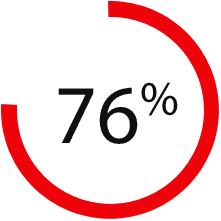 How quickly things change. It was only three years ago that The New York Times broke the story that Facebook was officially courting publishers to post native content on their site.
How quickly things change. It was only three years ago that The New York Times broke the story that Facebook was officially courting publishers to post native content on their site.
At the time, Dillon Baker of The Content Strategist called the implications of this idea “vast, controversial, and full of hyperbole that may or may not be deserved.
“As the late David Carr poetically wrote when first breaking the news of Facebook’s publishing plans in October, ‘For publishers, Facebook is a bit like that big dog galloping toward you in the park. More often than not, it’s hard to tell whether he wants to play with you or eat you,’” Baker wrote.
Speculation ran the gamut. Some looked to the potential for big numbers of views and dove all in; others remained skeptical of relinquishing control to the big dogs, knowing that Facebook was about to own the news through this form of native advertising.
Zoom forward to today, and publishers have realized two things: 1) the skeptics were right to be concerned about what this did to journalism; and 2) the new algorithms just announced are going to be painful – and potentially expensive – to navigate.
Facebook is now backing away from being a media company, saying they will prioritize user posts over publisher content in the news feed. Maybe it was the massive blow-up of fake news that pushed them away from the news, and the criticism that followed. Others believe it was the potential income from publishers who must now pay to play to get in front of their FB followers. Either way, it’s having a good effect for publishers.
“To protect against what’s been an ongoing decline in referral traffic, publishers have been adding new social distribution channels, investing more resources in existing ones and beefing up internal tools that deepen the relationships they have with existing users,” writes Max Willens in Digiday. “And while publishers that were overwhelmingly dependent on Facebook show less interest in diversifying their traffic, every publisher contacted for this story sees a major shift coming.”
Apparently they’ve seen it coming for quite a while, too. Baker wrote last April about a survey that shows most brands aren’t entirely committed to this kind of third-party distribution. In hindsight, that’s probably a good thing.
“Overall, 76 percent of brands either don’t use [FB Instant Articles, Google AMP, etc.], don’t know what they are, or only use them occasionally,” Baker wrote. “For example, only 9 percent of senior marketers from more traditional industries (finance, insurance, B2B, healthcare, and energy) use native formats.”
He said at the time that wasn’t terribly surprising.
“Most brands and publishers avoiding native publishing aren’t just producing content for clicks; they want to create loyalty and gather customer data, whether that’s for an eventual subscription or a long sales cycle,” he wrote.
News brands, on the other hand, embraced it heartily, after intense courting from Mark and his team. Now, organic reach is falling, referral traffic is plunging and new algorithms are poised to knock them into next Tuesday.
The big lesson here? Over-reliance on third-party distribution – no matter how much that third party says they want to help – is a nightmare. Own your online real estate; own your social media feeds. Diversify your marketing strategy and think audience-first and foremost. When we rely on anyone else’s quick fix, we put our own publishing strategies at risk.

January 17, 2018, 3:02 pm